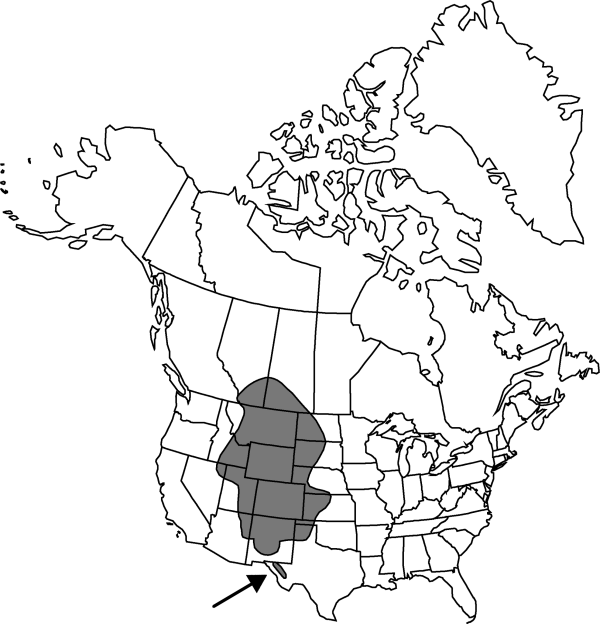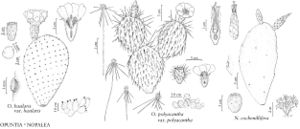Opuntia polyacantha var. polyacantha
Stem segments broadly obovate to circular, (4–)8.5–12 × (4–)5.5–11 cm; areoles 6–11 per diagonal row across midstem segment, 6–13 mm apart. Spines in most areoles, of 2 kinds: major spines (0–)1–3(–5) per areole, ± deflexed to reflexed or porrect at stem segment apex, yellow-brown to gray, 20–35(–40) mm; minor spines 0–5 per areole, deflexed, white, 5–10(–16) mm, sometimes spines of basal and near basal areoles are long, flexible, curling. Fruits stout; areoles 12–28, most bearing (4–)6–15 spines, 5–10 mm. 2n = 22, 44.
Phenology: Flowering late spring.
Habitat: Grasslands, pinyon-juniper woodlands, clay, sandy or gravelly soils
Elevation: 500-2000(-2800) m
Distribution

Alta., Sask., Ariz., Colo., Idaho, Kans., Mont., Nebr., Nev., N.Mex., N.Dak., Okla., S.Dak., Tex., Utah, Wyo.
Discussion
The morphotype, usually called Opuntia trichophora, has additional, curly, hairlike spines from areoles on older stem segments, but these plants occur sporadically throughout the range of O. polyacantha var. polyacantha from New Mexico to Wyoming.
Selected References
None.
